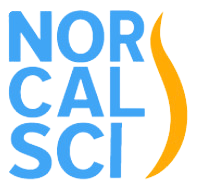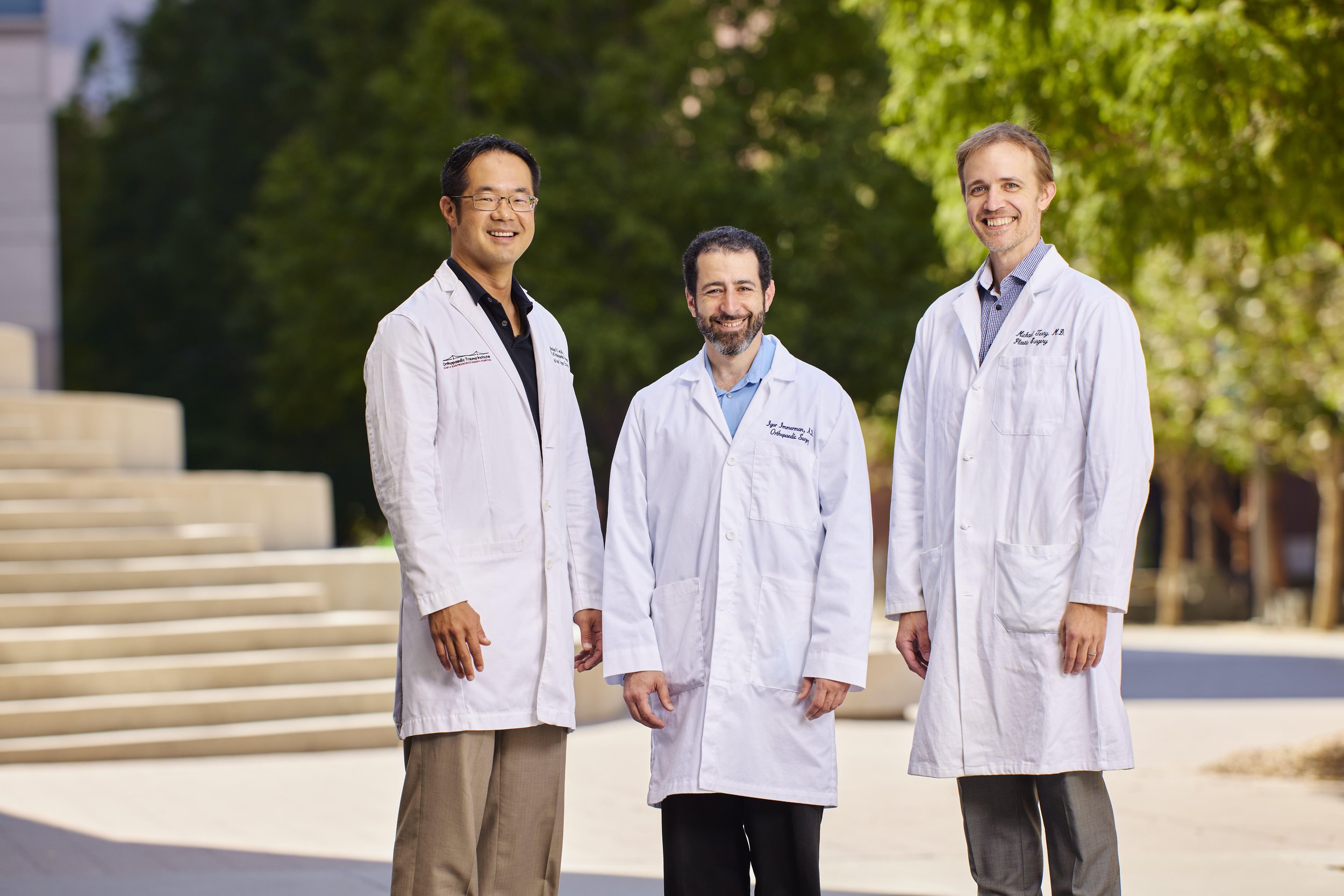Hand and Upper Extremity Reconstruction Surgery in Cervical SCI - Local opportunities available!
UCSF surgical team (from left to right): Nicolas Lee MD; Igor Immerman MD; Michael Terry MD
By Igor Immerman, MD and Michael J Terry, MD
Cervical spinal cord injuries account for as many as 50% of all spinal injuries and are devastating to the people suffering from them. It is estimated that there are as many as 250-500,000 patients per year worldwide. Upper extremity function is often the highest priority for these patients, and standard treatment options aimed at improving function include splinting, occupational and hand therapy, and various tools that allow functional adaptations.
Surgery can offer a range of additional options for functional improvement. It has been estimated that 65-75% of patients with cervical spinal cord injury could benefit from surgery; however only as few as 14% actually undergo surgical treatment to improve their upper extremity function.
Surgical options vary greatly based on the level of injury and the individual’s function, and range from treatments of spasticity and contractures to tendon and nerve transfers that actually restore some function. Studies have shown that 70-80% of surgical patients report improved quality of life as a result and objective functional improvements are seen in the majority of patients.
The best surgical candidates are often patients whose injury level is C5 or lower. Even in complete C5 patients some surgical options to improve function exist. For example, nerves or tendons can be transferred to restore elbow extension strength, which can help with transfers. In patients who have elbow flexion but no ability to grip objects, surgery can help restore some rudimentary grasp and pinch. In patients with lower level injuries who have already recovered some use of their hands, surgery can improve function by restoring some intrinsic hand muscle function.
While some surgical options like nerve transfers may be time dependent and best performed within 3-6 months after injury, others like tendon transfers can be done at any time. At the UCSF Peripheral Nerve and Complex Limb Reconstruction Center, our interdisciplinary team of orthopedic and plastic surgeons, and physical medicine and rehabilitation specialists, can do an individualized assessment and suggest the best options available.
We may be reached at peripheralnerveclinic@ucsf.edu and 415-353-4947.
References: van Zyl et al, Lancet 2019; Ziaziaris et al, JHS-Am 2022; Bednar Hand Clin 2016 Board Member

